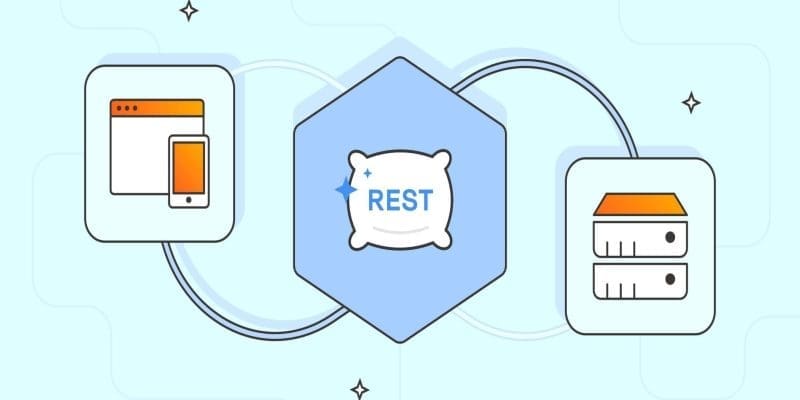
Demystifying Rest Apis: A Comprehensive Explanation
A REST API is a networked application architecture that uses the HTTP protocol to obtain data from other sources and generate results in JSON or XML formats. The client is the program or entity attempting to retrieve information. REST APIs also include resources clients retrieve using URIs (Uniform Resource Identifiers). Clients can access resources using URI protocols and interact with the information using HTTP mechanisms. Each software must employ servers to process user requests and store relevant data on their local network. The process is simple, consistent, and infinitely replicable, making it one of the best connectivity solutions.
REST APIs offer several advantages over other API solutions, including scalability, integration options, excellent performance, and a uniform interface. They are stateless, allowing data requests to be conducted in large volumes without congested networks or company servers. REST APIs can be implemented on multiple systems, allowing developers to integrate APIs across multiple platforms. They also offer impressive speed and dependability, reducing errors and time spent on requests. Caching replies can further enhance speed by eliminating the need to retrieve the same information repeatedly. Scalability is crucial for developers, allowing them to build API systems that can handle many requests without overloading servers. This is particularly beneficial for trading platforms, where real-time market data and other crucial information can be received without delays. REST APIs also benefit CRM systems, enabling the retrieval and analysis of customer data.
REST API, which stands for Representational State Transfer Application Programming Interface, is a set of architectural principles and constraints for designing and interacting with web services. It was introduced by Roy Fielding in his doctoral dissertation in 2000 and has since become one of the most popular approaches for building APIs on the World Wide Web.
Here are the key concepts and principles that define REST API:
- Resources: In a RESTful API, everything is considered a resource. Resources can be physical entities (e.g., a user, a product) or abstract concepts (e.g., a user session, a shopping cart). Each resource is identified by a unique URL (Uniform Resource Locator).
- HTTP Methods: REST APIs use standard HTTP methods to perform CRUD (Create, Read, Update, Delete) operations on resources. The primary HTTP methods used in REST are:
- GET: Retrieve data from a resource (read).
- POST: Create a new resource.
- PUT: Update an existing resource or create a new one if it doesn’t exist (usually used with a specific resource URL).
- PATCH: Partially update an existing resource.
- DELETE: Remove a resource.
- Stateless: REST is stateless, which means each request from a client to a server must contain all the information needed to understand and fulfill the request. There should be no reliance on the server’s previous state.
- Client-Server Architecture: REST separates the client (the user interface or frontend) from the server (the backend). This separation allows for scalability and flexibility, as the client and server can evolve independently.
- Uniform Interface: REST APIs have a consistent and uniform interface, which simplifies interactions.
Despite their competitive advantages, REST APIs have several shortcomings, including latency issues, inefficiency, and development complexity. The data fetching principle is inefficient, requiring retrieving the entire data block to display a fraction of it. This results in latency delays and overall inefficiency. REST APIs are easy to use and implement across different platforms, but their adoption may be challenging due to their complex architecture and the time and effort required to build a functional API bridge.
